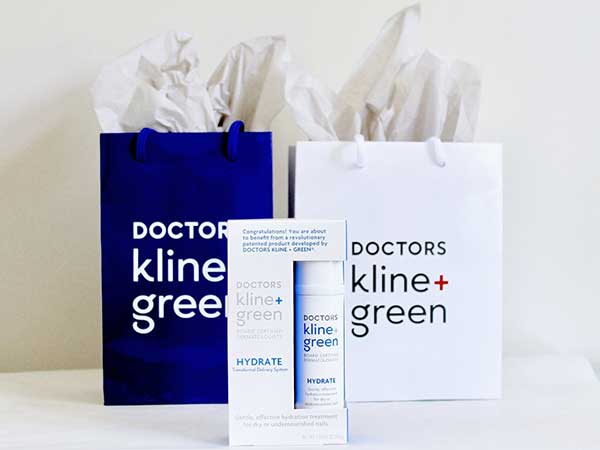How To Prevent Toenail Fungus
No one wants to experience toenail fungus (also called onychomycosis). However, it is relatively...
Beautiful nails are healthy nails, and we’ve all learned that healthy beauty is more than skin deep. Signs of good nail health are the nail’s pinkish-white translucent color, smooth, even length and white tips, half-moon shaped lunula (white section) at the nail’s base, and uniform cuticles. Contrast these happy nails with some common unhappy nail problems: peeling nails split by dryness or vitamin deficiency; or tiny white spots from nail-biting or constant polish. And don’t overlook horizontal grooves from stress, high fever, or injury; redness and swelling from biting or cutting cuticles; or spoon-shaped nails arising from iron deficiency or anemia.
Long nails are not always strong nails. Nail health may be much improved by shorter nail length. If you experience nail breakage, chipping, or if you’re treating a nail infection or fungal infection, clip your nails short and have a nail file handy to keep them tidy. Shorter nails will make it easier to maintain a healthy nail bed and nail plate.
Strong nails, well-shaped and carefully tended, are usually the result of careful and consistent nail care. Whether you file and polish your own nails or enjoy the services of a skilled manicurist for your manicure or pedicure, we offer some tips on how to maintain nail beauty and encourage nail health.
First, remember that the application of polish to fingernails or toenails is not required. A standard manicure or pedicure includes trimming, shaping, filing, and buffing. Give your cuticles a cuticle oil treatment and pamper your hands with a massage. Ask for a dry manicure instead of one that requires a pre-manicure soak in water. The pre-soak may swell the nail plate and, because the polish doesn’t swell along with it, it will make your polish more likely to chip. Another tip is to wipe the fingernail under its edge with isopropyl alcohol to remove oils that could encourage your polish to chip.
Be sure to take care of hangnails: Resist the urge to pull any hangnail away from the nail bed! You’re more likely to open a door for infection than to neatly remove that hangnail. Clip the nail as close to the nail bed as you safely can. Make a habit of using an emery board and nail file. There are many types and sizes available and they’re essential to stopping chips, peels, and snags as soon as you notice them. Carry one or two in your bag to prevent little emergencies from becoming nail tragedies. And about that manicure . . . .
Check labels of polish and nail polish remover for the presence of harsh chemicals. Choose products made with natural and more gentle ingredients. A dry manicure is best but, if you have any dirt or debris under your nails, soak them for just a few minutes. Be sure to remove all old polish. A little cuticle oil will make the cuticles easier to push back with an orange stick. If your nails are brittle or weak, try a coat of nail hardener. Protect your nails with a base coat to seal the nail and make the polish go on more smoothly. Then, apply 2 coats of nail enamel, then follow with a top coat to prevent nail chipping. Relax and allow your manicure to dry thoroughly.
Though often stunning and always durable, acrylic nails and gel manicures should be indulged in sparingly. They may effectively seal any fungal or bacterial infection at the base of the nail and in the nail bed and cause you to delay treatment. And always wear rubber gloves to protect your hands and your manicure when washing dishes.

Remove nail polish; give your toes a 10 minute soak to loosen dirt under nails and help soften calluses; push cuticles back with an orange stick; exfoliate; treat calluses; trim and file nails; massage and moisturize feet; and apply polish. Important note: Cut toenails straight across to prevent ingrown nails.
Don’t forget to take care of your nail tools. Wash and sterilize all manicure and pedicure tools, including the foot soaking vessel. Ask your nail professional about the salon’s procedures, and you may decide to bring your own tools to your appointment.
Biotin, a B-Vitamin also called Vitamin H, is essential to cell growth. It helps your body convert carbohydrates, proteins, and fats into energy as it helps regulate your LDL (bad cholesterol) and blood sugar. Biotin is vital to your body’s production of keratin, the protein that already makes up your hair, skin, and nails. Signs of biotin deficiency, though rare, include brittle nails and hair loss, but such deficiency may be halted or even reversed by taking over-the-counter or prescribed biotin supplements. Ask your doctor about it. Self-treating a condition and avoiding or delaying standard care may have serious consequences.
Nails that peel, crack, and yellow have been shown to respond well to a Vitamin E supplement. Apply Vitamin E oil to prevent cracked cuticles and dry skin around the nail bed. Good dietary sources of Vitamin E include almonds, hazelnuts, walnuts, peanuts, wheat germ and corn oil.
B Vitamins, called B-Complex Vitamins, include biotin, thiamine (B-1), riboflavin (B-2), niacin (B-3), pantothenic acid (B-5), pyridoxine (B-6), and folic acid. If your nails are spoon-shaped or brittle, you may add cobalamins (B-12). B-Complex Vitamins can help your body maintain a healthy nail bed, cuticles, and nail plate as they encourage new growth of strong nails.
Keep your nails looking strong and beautiful with Hydrate from Doctors Kline + Green
